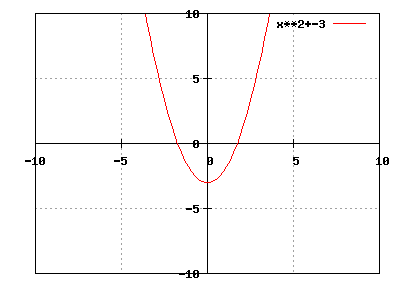User:Lenny Leeb
Hi my name is Lenny, I´m 16 years old. I live in Germany ( Munich ) and I`m a pupil of the Gisela Grammar School. My favourite subjects are art and sports.
Contents
Sandkasten
1.1Puella Rigensis ridebat Quam tigris in tergo vehebat. Externa profecta Interna revecta Sed risus cum tigre manebat. --Lenny 12:57, 5 October 2007 (CEST)
kursiver text
x(t)= [math]x_0[/math] + v*t [math]\Delta x[/math] = v* [math]\Delta t[/math] v= [math]\frac {x}{t} [/math] v= [math]\frac {x_1-x_0}{\Delta t}[/math] [math]x_1[/math](t)= [math]x_2[/math](t) [math]x_1+v_1*t = x_2+v_2*t[/math] [math]x_1-x_2 = (v_2-v_1)*t[/math] [math]t = \frac {x_1-x_2}{v_2-v_1}[/math] = [math]\frac {173m-25m}{28km/h-11km/h}[/math] 1.3:Lösungb) In diesem Fall handelt es sich nicht um eine gleichförmige Bewegung, da die Geschwindigkeit des Fahrzeugs nicht konstant bleibt, sondern sich immer erhöht V=s/t V=12m : 4s = 3m/s falsch V=68,1m : 7,5s = 9,08m/s V=93,6m : 9s = 10,4m/s V=156,5m : 12,7s = 12,32m/s V=178,6m : 14s = 12,76m/s [math]V(Durchschnittsgeschwindigkeit)[/math] = (3m/s + 9,08m/s + 10,4m/s + 12,32m/s + 12,76m/s) : 5 =9,512m/s falsch 1.7: Lösungx Ort (2) X = 40m +(-2,0 m/s) x 10s X = 20m (3) X = 20m +(0 m/s) x 5s X = 20m (4) X = 20m +(1 m/s) x 5s X = 25m (5) X = 25m +(2 m/s) x 5s X = 35m (6) X = 35m +(4 m/s) x 10s X = 75m (7) X = 75m +(0 m/s) x 5s X = 75m Antwort:Helena legt auf ihrem Pferd, insgesamt 75 meter zurück graph (test)TranslationMECHANICS 11 / Page 3Exercise 1.5: cycle tour Desiree and Marc cycle to the Plansee. They leave at 7 o’clock and arrive at home at 19 o’clock. Along the street there are kilometre stones. Every full hour they note their position x. a. Calculate the average speed for every time interval of 1 hour. Use the calculation formulas! b. Describe the course of the movement of every time interval in your own words. Possible interpretation? c. Calculate the average speed for the first 4 hours. How can you demonstrate this graphically? 1. Equation Of Motion We derive an abstract formula for linear-constant movements. From this it follows that ..... for this reason for example you can calculate the first place x and the known speed v of the current position on the end of one time interval.If we take [math]x_0[/math] for the place x(0) at time t = 0, we gain the
1.motion equation:
x(t)= x0 + v t It concerns of a liner equation. In mathematics we always write:
X is the independent and y the dependent variable.T is the so-called y-axisigment and m the upward gradient factor("gradient"). In the motion equation the independent variable of time is t, the place x depends on it. The velocity v is the upward gradient of the time-localstraight. Exercise 1.6: Flight competitionA buzzard has a flying competition against a falcon. the buzzard has an advantage of 14 km meted from the starting point, because with the speed of 95 km/h he is clearly slower than the falcon ( 153 km/h) a. Where and what time does the falcon draws level with the buzzard? b. Who wins the flightcompetition to the cross on the summit of the hörnle (40 km from the starting point) c. Draw an applicative time-place diagramm. Aufgabe 3.82.Lösunga. Gegeben: [math]70\frac{km}{h}=19,4\frac {m}{s} t=0,2s[/math] Lösung: [math]a=\frac {v}{t}=\frac{19,4\frac {m}{s}}{0,2s}=97,0\frac {m}{s^2}[/math] b. Lösung: [math]\frac{F_b}{F_g}= \frac{m*a}{m*g}=\frac{97 \frac{m}{s^2}}{9,81 \frac{kg}{N}}= 9,9[/math]
--Lenny 12:55, 7 December 2007 (CET) Lösung 5.1 a.[math]w=\frac {\Delta \phi}{\Delta t}[/math] [math]w=\frac {26\pi}{300s}= \frac {13\pi}{150}*s^{-1}[/math] Umlaufdauer: [math]5min=300s [/math] [math]300s:13=23,1s[/math]
Lösung 5.5a) w = f/T = (2 pi * 15) / 120s = 1/4 pi aZ = (1/4 pi)2 * 5,3m = 3,26m/s2 3,26m/s2 / 9,81m/s2 = 0,33 = 33% b) FR = mue * FN => FG = mue * FZ => g = mue * aZ g = mue * w2 * r => w = [math]g/(mue * r)[/math] = [math]9,81/(0,1 * 4,2)[/math] s-1 = 4,8s-1 w = 2 * pi * f => f = w/2pi = 0,77s-1 T = 1,3s
Lösung 5.6a)geg.:
ges.:
[math]T = \frac{3,14 m}{3,4 m}[/math] [math]T = 0,924 s \frac{}{}[/math]
[math]F_Z = 0,80 kg * (\frac{2\pi}{0,924s})^2 * 0,50m[/math] [math]F_Z = 18,49 N \frac{}{}[/math]
[math]F_{Z.grav} = 9,81 * \frac{N}{kg} * 0,8 kg[/math] [math]F_{Z.grav} = 7,84 N \frac{}{}[/math]
[math]F_{Z.oben} = 10,65 N \frac{}{}[/math]
[math]F_{Z.unten} = 26,35 N \frac{}{}[/math]
b)geg.:
ges.:
FZ = m * w2 * r ->w = [math]F\ltsub\gtZ\lt/sub\gt : m*r[/math] |
